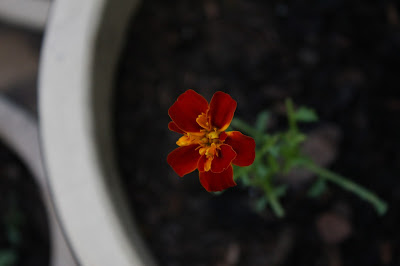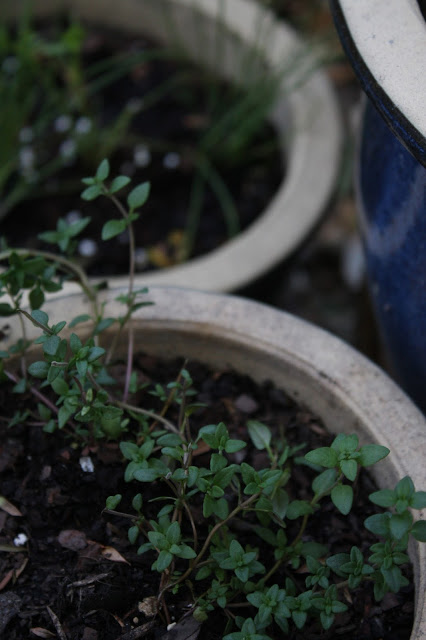Ages ago I bought a worm farm and
wrote a blog entry about becoming a worm farmer.
Since then I've had two lots of worms go to the giant worm farm in the sky above. So you can say I'm well learned in the lessons on how NOT to worm farm. Since we moved to our new home my worm farm has sat empty.
But today a new batch of little squiggly worms were installed and I once again became a worm farmer. This time a little wiser for my past mistakes.
When I told a good friend by text that the worm farm was up and running again, she replied that she might have to look into setting up a worm farm for her gardening husband. So I thought it might be a good time to blog about all I know (not a great lot in the scheme of things!) about worm composting.
Why worm farm?
I have covered this in my previous post so I'll keep it brief here.
- food scraps go into the worm farm instead of landfill. When food scraps go directly into landfill they rot in a way that creates methane which has been linked as a contributing factor to climate change.
- the worms do their work on the scraps and produce worm castings (a fancy way of saying worm poo) which is actually super brilliant stuff for gardens. Mixed in with soil it is a natural and high-performing fertiliser with nutrients galore for plants.
- If you have a worm farm that is designed with a water catcher at the bottom, you also collect the worm pee and the nutrients that are washed down through the worm farm as a liquid fertiliser.
What do you need to start and where can you source it?
The worm farm can be a commercial once such as the
Can-O-Worms, the Worm-Cafe (both available at Bunnings) or it can be a home-made rig.
I opted for a commercially produced setup, the Can-O-Worms, which I paid $75 for at Bunnings. (Today I saw the same thing for $63.) If you are against large companies like Bunnings, you could try smaller gardening suppliers or track down a local composting products company or online seller of worm farms instead.
If you want to make your own at home it can be done very cheaply. There are a stack of videos on
this website showing a variety of ways to make your own, even one using styrofoam fruit containers. If making your own the main considerations are to provide enough drainage and insulation, a solid and tight fitting lid to prevent nasties from getting in and, if possible, a method of catching the liquid fertiliser.
First things first - you need composting worms. Fishing bait worms or other worms just won't do the job. You need redworms or tigerworms for composting.
To populate your worm farm you should start with roughly 1000 worms. If you have a large family or you tend to produce a large amount of kitchen scraps you may want to start with a larger number.
You can buy worms from a variety of sources. You can buy boxes of worms at Bunnings and other garden stores in the composting section. (Today I paid $48 for 1200 worms). You can also look on gumtree or traderoo for local worm breeders who will sell you an amount of worms, often for a cheaper price than the prices you pay at Bunnings et. al. Lastly, there are online suppliers who will ship worms to your door.
Your worms will need some stuff to live in - it must be lose and easy for them to squiggle through. In two of my farms I have used coir which they seemed to like very much. When setting up the new farm today I was under-prepared so my worms will make do with the smelly mix of manure and soil they came in as well as a bit of potting mix and shredded newspaper.
Coir blocks can be bought very cheaply from gardening centers.
You will need some kind of thick, insulating cover to go ontop of the food scraps. (This is different to the lid to the worm-farm which is designed to keep things dark and secure from nasties). This dampened cover will help keep the farm moist and the worms will be more keen to visit the top of the farm and feast on your scraps.
You can be a sucker, like me, and pay the handsome sum of $9 for a special commercial worm mat or you can just use a thick layer of newspaper. The newspaper has the added bonus that it will degrade over time. My commercial mat has the bonus of a little handle to lift it up so I don't have to touch gross newspaper. Yes. I'm a sook.
You can buy specialised powder to put into the worm farm which will help keep the conditions at the perfect pH for wormies. I didn't bother with this in my earlier attempts but thought that I would use it this time. Anything that helps this be successful for longer is welcome to me! I bought this product from Bunnings (again, in the composting section) for $11. Only a little is sprinkled into the farm each week so I expect it will last me for some time.
If you don't want to buy a specialised neutraliser you can also add a little bit of wood ash, dolomite or lime to the farm every so often which will do the same thing.
What is the cost of setup if you buy everything commercially?
All together, if I bought everything I needed for the worm farm at Bunnings (based on prices I saw there today) the cost of setting up a worm farm would look like this:
Worm Farm (Can-O-Worms) $63
Box 1000 worms $48
Block of coir $4
Covering mat $9
Neutraliser $11
Total - $135
The cost of this could be reduced to $115 by not buying the covering mat and neutraliser. Of course you can always make your own home-made farm setup to reduce the cost as well.
One thing you cannot scrimp on is the worms. You do need to buy the full 1000+ worms. Not a cheaper booster pack with only 500 worms. That said, you may find that local sellers of worms (on gumtree or other classifieds) will sell composting worms more cheaply. Check around!
What mistakes should be avoided?
All of these mistakes I have made. Learn from my follies!
- Don't keep the farm in direct sunlight. Shade is necessary to keep the farm cool and moist.
- Don't feed the wormies citrus or onion scraps. They don't like it, won't eat it and it will raise the acidity in their farm.
- Don't neglect to maintain the pH levels in the farm.
- Don't let the farm dry out. Keep it all moist.
- If you find you are putting more scraps in than the worms can handle get a booster pack of extra worms.
- Don't just add the scraps and nothing else. Occasionally add a spade or two of soil/coir/compost to the scraps.
There you have it! A recipe to put together a worm farm and a nice list of what to avoid.























